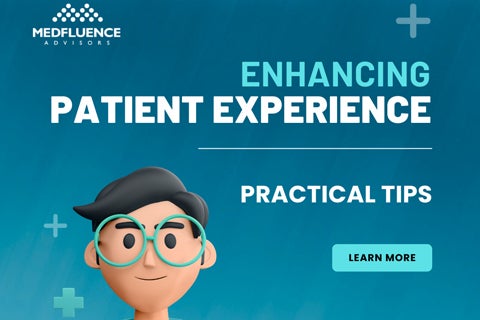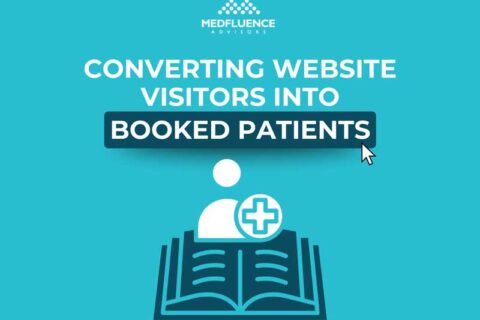Enhancing Patient Experience: Practical Tips

Excellent patient care is at the core of every medical practice. Aside from worrying about making an income and keeping the business thriving, healthcare providers have the responsibility to deliver care and treatment that will help patients better navigate their healthcare journey.
The patient healthcare journey is multi-faceted and involves a variety of steps. It is the job of healthcare providers to ensure that the journey goes smoothly and that the patients are comfortable, no matter how long the journey is to find appropriate solutions.
When patients are comfortable and at ease with your practice and the services you provide, they are more likely to be recurring clients, should it be necessary. They become loyal patients and are able to build long-lasting relationships with your organization. This not only opens up doors for a lucrative business but is also an opportunity to have a fulfilling healthcare practice by providing your community with the best care and treatment plans.
What Is Patient Experience?
In healthcare, patient experience is more than just delivering and receiving medical treatment. It encompasses the entire healthcare journey and includes all the patient’s interactions with the healthcare organization.
Patient experience encompasses every interaction a patient has with the healthcare system, from their first inquiry to post-treatment follow-ups. Each of these touchpoints shapes their perceptions of both the care received and the healthcare organization itself.
Every step in the patient journey influences how patients remember their experience with a provider. Medical professionals must focus not only on delivering effective treatment but also on ensuring patients feel valued as individuals rather than just numbers.
The patient experience begins the moment a potential patient shows interest in your practice and extends well beyond their first visit. It includes crucial post-care follow-ups that reinforce the connection established during treatment.
Investing time and resources to make each stage of the patient journey convenient, comfortable, safe, and easy to navigate is essential. By fostering a positive patient experience, healthcare organizations can enhance patient satisfaction and ultimately achieve higher retention rates.
Patient Experience vs Patient Satisfaction
Patient experience is not to be confused with patient satisfaction. Though often mistaken for the other, they are two different concepts. The difference between the two might be subtle but the distinction is important nonetheless.
In simple terms, patient experience refers to a patient’s perception of their care, encompassing everything that occurs throughout their healthcare journey. It involves evaluating how actual events align with expectations based on established standards. Assessing patient experience means comparing what should have happened with what actually took place, focusing on the patient’s perceptions of these events.
Patient satisfaction focuses on whether a healthcare provider meets a patient’s expectations during their encounter. It assesses how happy patients are with the care and treatment they receive.
While patient experience is more objective, patient satisfaction is subjective, as expectations can vary significantly from one individual to another. For instance, two patients may undergo the same treatment but report different satisfaction levels due to their unique expectations for their healthcare journey.
Why Should Your Practice Improve Patient Experience?
While diagnosing illnesses and delivering effective treatment plans is the priority of healthcare systems, practices should do so while also delivering excellent patient experiences. There are a lot of merits for why your practice should also prioritize improving patient experience:
-
Improve quality of care and patient outcomes
Healthcare doesn’t start and stop at diagnosing illnesses and providing treatments. Care providers help patients get better through a long healthcare experience.
A patient-centered approach to healthcare often leads to an improvement in the quality of care because healthcare providers care for the patients as people and not merely as numbers or symptoms.
When patients feel valued and heard by their care providers, they are more likely to adhere to their treatment plans. This sense of trust and respect not only enhances their experience but also leads to better patient outcomes.
-
Increase patient satisfaction and loyalty
Healthcare providers who listen to their patients and take into account their health concerns will improve patient satisfaction. The more satisfied patients are, the higher the likelihood for them to choose your practice over and over again for their medical needs, fostering patient loyalty. Higher patient retention rates are crucial for medical businesses and can be a good source of revenue flow.
-
Better safety protocols
Healthcare organizations that prioritize the improvement of patient experiences also focus on the implementation of better safety protocols. This includes proper diagnosis, correct treatment plans, and proper record-keeping all for the sake of the patient’s health and safety. As a healthcare system, you will want to prevent errors, and better safety protocols in place will help with that.
-
Engage and empower patients
By taking proactive steps to improve patient experience, healthcare providers also encourage patient engagement and empower them regarding important health decisions. Showing patients that you hear them and value what they have to say will encourage them to take an active role in their healthcare journey.
The more engaged and empowered patients are, the more they are likely to follow recommended treatment plans that will benefit both them and your healthcare practice.
-
Meet regulations and requirements
The healthcare industry is an evolving landscape with regulatory updates popping up here and there. Healthcare practices that prioritize improving patient experience are more likely to meet the evolving regulatory updates and changes in place. This lessens the risks of regulatory errors and leads to fewer lawsuits.
-
Positive financial implications
Improvement in patient experience can have positive financial implications for healthcare organizations.
A positive patient experience fosters patient trust and loyalty. When patients come back to your practice, this creates a consistent stream of revenue and financial stability – both are crucial for the success and growth of your business.
Additionally, engaged patients who receive positive patient care experiences are more likely to achieve better health outcomes. This means fewer tests and treatments – that tend to be costly – because there is less room for errors.
Practical Tips for Enhancing Patient Experience

By now, you must have realized how crucial it is for your private practice to prioritize enhancing patient experience. Here are 17 practical tips to help you implement it in 2025:
-
Ensure a strong and valuable online presence
Today’s modern patients are always online so it makes a lot of sense for your practice to create and maintain a strong and valuable online presence. This will shape how your audience forms their first impression of your practice.
Your website is the digital front door to your practice. Ensure correct information on your website including clinic location, contact information, services offered, and practicing physicians. Claim directory profiles on local business websites and ensure that information is correct, clear, and consistent across all your listings.
Additionally, make sure your practice is present on major social media platforms, where your audience is hanging out as well. Regularly upload content and photos. Again, ensure that information is updated, correct, and consistent with the rest of your website. It would be beneficial to have a way for patients to get in touch with you on your socials as well.
-
Make appointment booking easy and provide online booking
Streamlining booking and appointment scheduling will make things easy and convenient for patients. Offering online scheduling is an efficient way to make healthcare accessible to patients as this allows them to do it with freedom in their own time.
Allow online booking through your website, social media platforms, email, or text. An efficient scheduling system will also automatically update this in your physician calendar, ensuring that both parties are ready for consultation.
Additionally, patients will appreciate it if the information they provide during online appointment booking is automatically logged into their health records, reducing the redundancy of asking them to fill out the same paperwork after arriving at the facility.
-
Enhance digital patient portals
If possible, look into patient portals and launch your organization’s system. Digital patient portals allow patients to access the organization’s services. It’s also a great way to further enhance patient-provider communication, increasing the patient’s involvement in their healthcare.
Patient portals give convenient and quick access to medical records, test results, and online bookings. It also gives quick access to communication channels that can connect patients and providers with ease and convenience.
-
Adopt telehealth
Telehealth has changed the way healthcare is delivered and received. The transformation reached its peak at the height of the COVID-19 pandemic and it isn’t going away anytime soon. If you still haven’t, consider implementing it in your practice as well.
Telehealth allows patients to consult with their physicians online, without having to meet face-to-face. This saves time, effort, and money from having to physically go to clinics. It also allows patients from remote areas and those with limited mobility to have their healthcare needs met at their comfort and convenience.
-
Offer personalized care and communication
Improve patient experiences by offering personalized care and communication. Patients want care providers they feel comfortable with – someone who listens and actually cares about their health and well-being.
In addition to providing quality care, physicians who see their patients as human beings rather than just numbers and a set of symptoms will enhance the entire healthcare journey and experience. Be present, listen, and pay attention to patients during consultations.
-
Train all healthcare staff on patient experience
Enhancing patient experiences is not the job of one person – it is rather a teamwork from all the staff and departments of a healthcare system.
Train all your staff – from front-office staff to medical staff – to great patients with a warm and kind attitude. This will set the tone for the rest of the patient’s healthcare journey with your organization.
-
Simplify care coordination
Patients tend to receive care from multiple providers. This opens up the need to access their medical information from other providers. Don’t ask patients to do the work of providing their medical information. Instead, implement care coordination strategies that streamline the flow of information and medical records.
-
Reduce wait times
Patients can easily be frustrated if you make them wait too long as this can make them feel you don’t respect their time and schedules. Using digital and online check-ins before appointments can be a good way to reduce long wait times. Additionally, if you know you’re running late, tell your staff to relay this to patients who are waiting.
-
Streamline paperwork and make it available online
Give patients the option to fill out any necessary paperwork online before they come in for their appointment. Many patients prefer this method over manually filling out paperwork in the waiting room. This can also be a great way to reduce wait time as paperwork has already been filled out and processed.
-
Create a comfortable waiting room
Design a soothing and comfortable waiting room. Include comfortable chairs, warm lighting, and even spa-like music to relax your patients. Keep the area clean so patients can be more at ease while waiting for their appointment.
-
Involve patients in their care
Healthcare is a two-way street. Involve patients in their care by providing them with knowledge and information about their visit, consultation, symptoms, diagnosis, treatment plans, and future appointments. This will give them autonomy over health decisions. It also makes them trust you and your expertise more.
-
Send appointment confirmations and follow-up reminders
Patients can be busy and they can forget appointments and follow-ups. Help them by sending appointment confirmations and follow-up reminders. Reminders via text are preferred by many. Doing this extra step will show your patients that you value them showing up for their appointments and will also reduce no-shows.
-
Make yourself available to communicate on multiple channels
Communication is crucial for excellent patient experience. Make your organization available to communicate across multiple channels so patients can quickly reach you. This can be through text, patient portals, landlines, and email newsletters.
-
Embrace and leverage patient feedback
Encourage communication well beyond after the patient leaves your clinic’s facilities. Encourage patient feedback. Thank patients for positive feedback but don’t ignore the negative reviews either. Instead, acknowledge the concerns stated and encourage them to contact you privately so you can further address the issue.
Leverage patient feedback and use them to see the issues and take proactive steps to address and correct them.
-
Encourage employee engagement
Keep your staff and employees engaged and happy. A happy team means good service and happy patients. Encourage a positive work environment and invest in your employees’ continuous professional development. Show them you appreciate all the work that they do and are irreplaceable forces in your organization.
-
Show respect, empathy, and compassion throughout the healthcare journey
Patients are already dealing with complicated symptoms and illnesses. The best thing you can do to ease their healthcare journey is to show them respect, empathy, and compassion. Treat your patients with kindness and train all your staff to do the same – it will go a long way in improving patient experiences.
-
Make educational healthcare resources available
Create educational content and share it across your website and social media platforms to give your audience easy access to healthcare resources. Include information on diseases, treatments, and services your organization offers. This also furthers your position as an expert in the medical industry, increasing patient satisfaction and trust.
Conclusion: Why Prioritizing Patient Experience Matters
The patient experience is central to your medical practice, alongside delivering quality care. Healthcare providers should prioritize not just diagnoses and treatment plans, but also ensuring patients have a comfortable and supportive journey throughout their care.
Fostering excellent patient experiences builds trust and loyalty, which not only contributes to the growth of your practice but also solidifies its role as an integral part of the healthcare system and the community.



